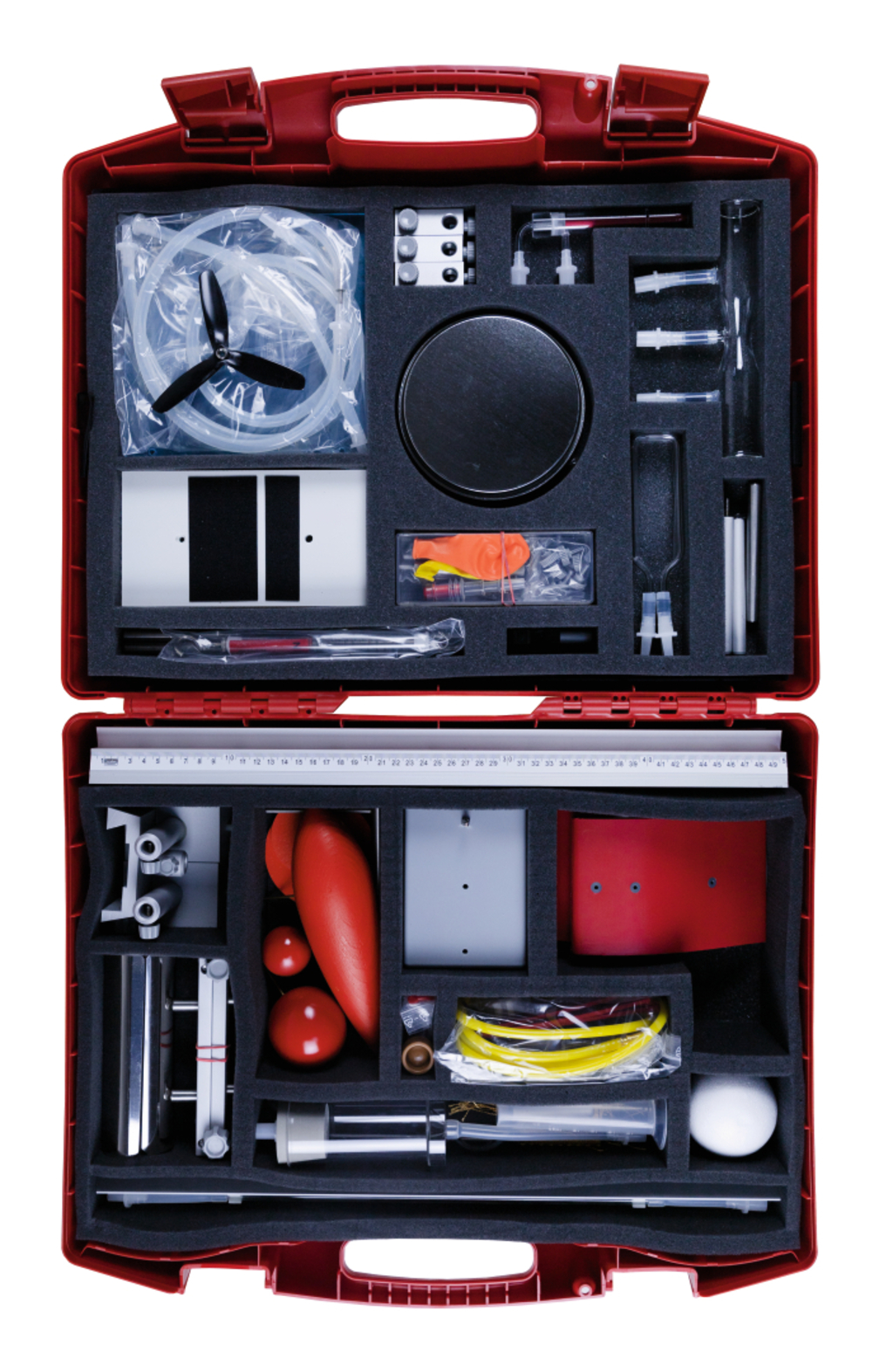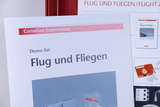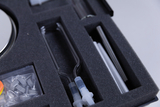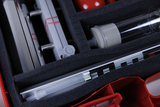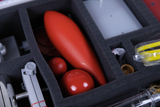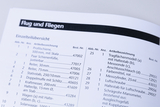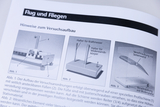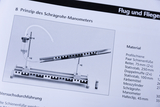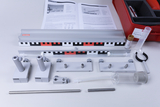Demonstration kit Flight and flying
The kit contains apparatus and resources for demonstrating the fundamental processes and relationships which make flying possible due to static or dynamic lift and by reaction engines.
Using a hot-air balloon as an example, it is possible to impressively yet simply explain and illustrate that particular form of flight.
The response of differently shaped bodies in the presence of a flow of air is investigated using various experiment set-ups, and thereby a more detailed understanding of the pressure and air
resistance arising can be gained.
A model rocket can be used to demonstrate how rockets fly even without the presence of an atmosphere.
Technical specifications
Size of kit: 540 x 450 x 150 mm
In this experiment, the students use the Venturi tube to measure the flow velocity.
The students observe what happens to a hot air balloon when it is filled with air using a heating device.
In this experiment, the students fan air into a solar balloon.
We will shortly provide you with a description of the experiment at this point.
The experiment impressively demonstrates the effect of dynamic lift.
In this experiment, the students examine the flow velocity.
We will shortly provide you with a description of the experiment at this point.
We will shortly provide you with a description of the experiment at this point.
We will shortly provide you with a description of the experiment at this point.
In this experiment, the pressure differences on a wing are examined and observed.
In this experiment, the pressure distribution on an airfoil is examined and observed.
Measurement of dynamic buoyancy using a buoyancy model and a solar balance.
A thread comb is held over the wing and the flow pattern is determined by observing the threads.
In this test, a carriage is held in the stop position and then a maximum air flow is set. The car is released and its behavior observed.
The students measure the flow resistance.
The students measure the air resistance of a wing and examine its dependencies.
In this experiment, the students observe the flow processes on resistance bodies.
An air screw is rotated and moved in the air flow. The students observe what happens when the plate is brought closer to the propeller.
How does an air screw work? In this experiment, an airfoil is held between the airflow generator and the propeller. the students examine the result.
The students measure the pulling force of an air screw.
In this experiment, an air screw is attached at right angles to the rail. The flow speed is increased while the air screw is observed.
We will shortly provide you with a description of the experiment at this point.
The students examine the recoil generated by a balloon.
The experiment impressively demonstrates the effect of dynamic lift.
- 1 × Colouring agent, red for lab use only
- 1 × Foam insert 1 for 29008, 495x350x25 mm
- 1 × Foam insert 2 for 29008, 510x370x80 mm
- 1 × Storing diagram,int.vers.(Flight and Flying)
- 1 × Air foil model
- 1 × Lifting power model
- 1 × Airscrew
- 1 × Support rod for 29056/ 43025/44583
- 1 × Pressure gauge setup
- 1 × Prandtl tube
- 1 × Venturi tube w. couplings
- 1 × Set (3) U-tube manometers
- 1 × Styrofoam ball, 70 mm Ø
- 1 × Thread comb
- 1 × Rocket model ROKIT
- 2 × Stand rod 250x10 mmØ stainless steel
- 1 × Stand rod 100x10 mmØ stainless steel
- 3 × Bosshead with slit
- 1 × Dynamometer, 200 mN
- 1 × Scale 0.5 g to 1000 g, / 1 g to 2000 g
- 1 × Tray 510x360x20 mm
- 1 × Lidfoam grey,515x355x10mm
- 1 × Plastic case ca.540x450x150 mm
- 1 × Holding clip on rod, 15 mm Ø
- 1 × Carriage with two rods
- 1 × Solar zeppelin
- 1 × All purpose rail, 500 mm
- 1 × Rider with clamping tube 30 mm
- 2 × Rider with clamping tube 75 mm
- 1 × Air pump with transparentcylinder
- 1 × Rubber balloons, 100 pcs.
- 1 × Heat stack, 150 mm
- 1 × Mini-hot-air balloon ca.40x32 cm, w. manual
- 1 × Esbit burner, nickelplate
- 1 × Dry combustibles ESBIT 20 tablets
- 1 × Metal plate, 150 mmØ
- 1 × Plastic box, 140x50x25mm
- 1 × Measuring cylinder, PP, 25 ml
- 1 × Pair of adjustable feet for rails
- 1 × Holding clip on rod, 25 mm Ø (rod=100x10 mm)
- 1 × Holding clip on rod, 45 mm Ø (rod: 60x10 mm)
- 1 × Silicone oil, 10ml
- 1 ×
- 1 ×
- 1 ×
- 1 ×
